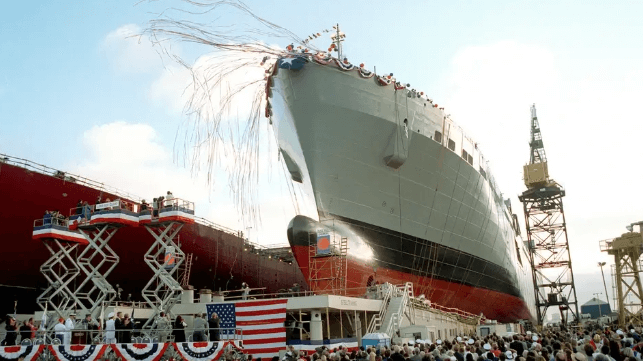Building Markets, Not Just Ships: A Blueprint for US Shipbuilding

In 2024, U.S. commercial shipyards produced just one-tenth of one percent of global ship output. That stark number underscores a long-term competitiveness challenge with implications that extend well beyond the waterfront. A stronger commercial shipbuilding sector could bolster national and economic security, strengthen the maritime workforce, and make the broader industrial base more resilient. But the question remains: how can the U.S. compete in an industry dominated by well-established global leaders?
Our research suggests the answer may lie not in replicating the models of others, but in competing differently. Many of the world’s major shipbuilding nations—particularly China, South Korea, and Japan—rely heavily on government subsidies, state ownership, and conglomerate structures to absorb losses and sustain production scale. The U.S. system is built on different foundations: private enterprise, diversified capital markets, and cross-industry innovation. Those distinctions, while challenging in some respects, may offer strategic advantages if harnessed deliberately.
The U.S. could focus on using targeted public funding to unlock larger volumes of private capital—channeling investment into areas where market demand and U.S. comparative advantages already intersect. That means enabling—not replacing—the market.
Three emerging segments stand out: autonomous vessels, alternative fuels, and smart ports. Each offers a near-term opportunity to attract private sector funding, catalyzing new demand for U.S.-built ships and maritime systems, while supporting modernization across the broader industrial base.
Autonomous vessels can improve safety and create new exportable technologies. Alternative fuels—such as LNG, methanol, hydrogen, and even next-generation nuclear micro-reactors—are changing ship design and propulsion in ways that align with U.S. energy leadership. Smart ports, meanwhile, apply digital and automation tools that can improve trade efficiency and logistics resilience. Together, these markets could re-anchor U.S. shipbuilding competitiveness in areas where the nation already leads globally—in artificial intelligence, the Internet of Things, cloud computing, and advanced energy.
Focusing on these disruptive segments also allows the U.S. to compete on innovation rather than scale. Autonomy, digital infrastructure, and alternative fuels are still emerging markets; the competitive “rules” are not yet fixed. By helping to shape standards, technologies, and financing frameworks early, the U.S. can create conditions that attract private investment and accelerate learning across its maritime value chain.
To grow these emerging markets the U.S. should consider steps that lower investor risk, standardize technologies, and streamline regulation, which can help private capital flow into the sector. For example, establishing shared testing ranges for autonomy and fuels, aligning technical standards across ports, or creating flexible financing structures could allow both public and private actors to plan beyond single budget cycles. Similarly, focusing on workforce readiness—through training in AI, systems integration, and advanced manufacturing—could align talent development with emerging maritime needs.
This approach reframes shipbuilding not just as a manufacturing challenge, but as an innovation and investment opportunity. It also leverages the strengths of the broader U.S. economy: deep financial markets, a leading research ecosystem, and industries already advancing technologies that are expected to define the next era of shipping. In doing so, it creates the potential for commercial shipbuilding to reinforce national security, rather than rely on it.
The global shipbuilding landscape will remain highly competitive. Yet by pairing targeted public support with private-sector innovation, the U.S. can compete on its own terms—building not just ships, but markets that demand them. Durable shipbuilding competitiveness can come from catalyzing investable demand. Competing differently can be the most practical—and most powerful—way forward.
Pete Heron is a Principal with Deloitte Consulting LLP. He serves in the aerospace and defense sector. He has delivered global supply chain transformations with benefits of millions of dollars in income statement and balance sheet improvements.
Rear Admiral John W. Mauger, USCG (retired), has over three decades of experience in maritime operations. A marine safety engineer, he ensured the safety and security of commercial shipping through the development and enforcement of US and international regulations for ship design, construction, and operation.
The opinions expressed herein are the author's and not necessarily those of The Maritime Executive.
